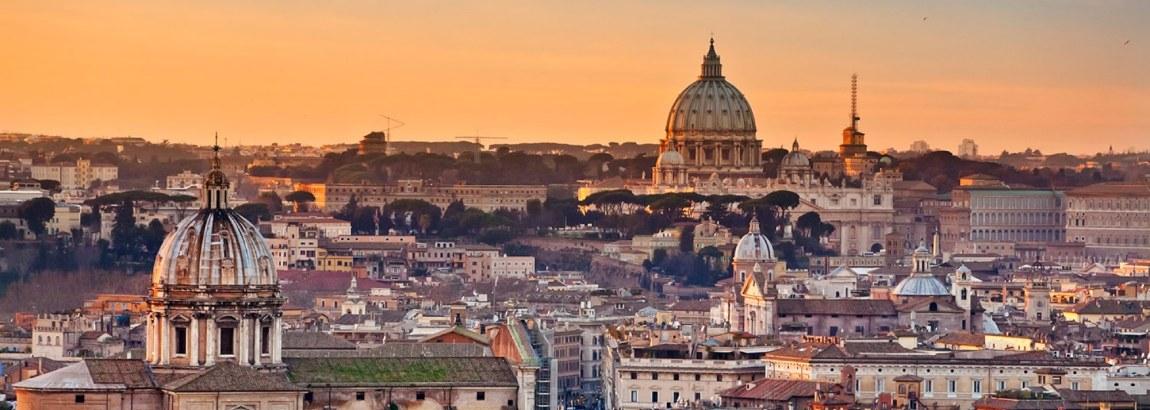
| City - Airport | Departure: | ||
| Iasi | Chisinau | ||
| to Rome (ROM) | IAS → ROM | RMO → ROM | |
| - Ciampino (CIA) | IAS → CIA | RMO → CIA | |
| - Fiumicino (FCO) | IAS → FCO | RMO → FCO | |
The ruins of the ancient Forum and the Colosseum demonstrate the former greatness of the Roman Empire. The Vatican, seat of the leadership of the Roman Catholic Church, is immensely popular with tourists for its St. Peter's Basilica and numerous museums.
or the Flavian amphitheater - an amphitheater, an architectural monument of Ancient Rome, the most famous and one of the most grandiose structures of the Ancient World that have survived to our time. It is located in Rome, in the lowlands between the Esquiline, Palatine and Celian hills. The construction of the largest amphitheater of the ancient world, with a capacity of over 50 thousand people, was carried out for eight years as a collective building of the emperors of the Flavian dynasty. It began to be built in 72 AD. e. under the emperor Vespasian, and in 80 AD. e. the amphitheater was consecrated by the emperor Titus. The amphitheater is located on the spot where there was a pond that belonged to the Golden House of Nero.
the so-called "Temple of All Gods", an outstanding monument of the history and architecture of ancient Rome, built between 118 and 128 AD. eh
the largest fountain in Rome, together with the facade of the building, which is part of the architectural and sculptural composition, has a height of 25.9 m and a width of 49.8 m. The fountain was built in 1732-1762 by the project of the architect Nicolo Salvi. It adjoins the façade of Palazzo Poli. An architectural and sculptural composition of the late Roman baroque with elements of neoclassicism. The name comes from the Latin "trivium". The fountain is located in the central part of Rome, on the western slope of the Quirinal Hill.
the Catholic Cathedral, the central and largest building of the Vatican, the largest historic Christian church in the world. One of the four great papal basilicas of Rome and the ceremonial center of the Roman Catholic Church. Ranked first in the list of seven pilgrimage basilicas in Rome. Several generations of great masters worked on its creation: Bramante, Raphael, Michelangelo, Bernini, Maderna. The capacity is about 15 thousand people inside the cathedral and 60 thousand people on the square.
a complex of museums located on the territory of the Vatican State. Their collections were created by popes and contain artwork by classical masters, including works from the Renaissance. The museums were founded by Pope Julius II at the beginning of the 16th century. The route through the Vatican Museums includes the Sistine Chapel with ceiling paintings by Michelangelo, and the stanzas decorated by Raphael. In 2013, 5.5 million people visited the Vatican Museums, making them the fifth most visited museum. The museums have 54 galleries, or halls, of which the Sistine Chapel is the last.
forum in the center of Ancient Rome, together with the adjacent buildings. Initially, it housed a market, later it included the comitia, curia, and acquired political functions.
former home church in the Vatican. Built in 1473-1481 by the architect George de Dolci, commissioned by Pope Sixtus IV, from where the name comes from. Today, the Chapel is a museum, an outstanding monument of the Renaissance, which is also used for holding conclaves at which the cardinals elect a new pope. The Sistine Chapel Choir is an internationally renowned professional church choir.
main staircase in the center of Rome, descending from the top of the Pincio hill and the Trinita dei Monti church located there to the Spanish square. One of the most famous buildings of the late Roman baroque. Built in 1721-1725. The monumental staircase of 136 steps was commissioned by French Cardinal Pierre Guerin de Tansen and inaugurated in 1725 by Pope Benedict XIII on the occasion of the Jubilee Year of the Catholic Church.
Roman square in the form of a rectangle elongated from south to north, arranged on the site of Domitian's stadium. From the 15th century to 1869, the location of the city market. Built up in the 17th century in the Baroque style. Two churches overlook the square, including the church of St. Agnes. It was built in 1652-1672 by architects Girolamo and Carlo Rainaldi, Francesco Borromini, Gian Lorenzo Bernini, as well as several palaces, including Palazzo Pamphilj.
a square in Rome, from which the streets of Corso, Babuino and Ripetta radiate out to the south. The corners between the streets are very similar in appearance to the church-propylaea of Santa Maria dei Miracoli and Santa Maria in Montesanto. The square has the shape of an oval 100 × 165 m. From the north it is bounded by the gate of the same name - Porta del Popolo. In antiquity, the gates were part of the wall of Aurelian and were called the Flaminian ones, because the ancient Flaminian road begins to the north of them, along which the bulk of travelers arrived in Rome over the centuries.
Airports: